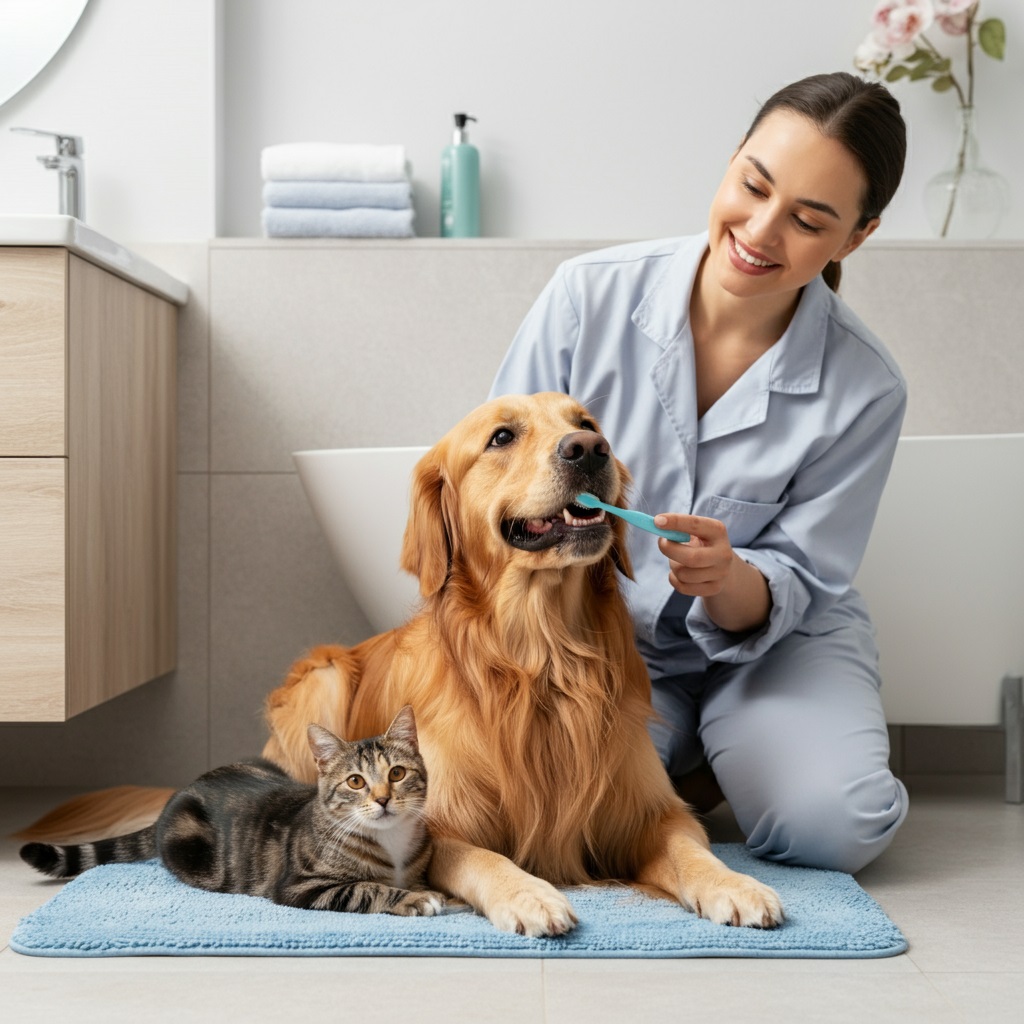
Keeping your pet happy and healthy goes beyond regular vet visits, nutritious food, and playtime. Dental care is one area that often gets overlooked but plays a vital role in your dog or cat’s overall well-being. Brushing your pet’s teeth may sound intimidating, but with the right tips and approach, it can become a part of your routine as much as walks or meals are.
This guide will walk you through why dental hygiene for pets matters, what tools you need, and how to easily brush your furry companion’s teeth without stress—for you or them.
Why Dental Health Matters for Pets
Pets, just like humans, can develop dental issues that extend beyond their mouths. Plaque buildup, tartar, and gum disease aren’t just unsightly or painful for animals; they can lead to more serious problems, including infections and organ damage.
Understanding the risks of neglecting dental care
- Gum Disease (Periodontal Disease)
Studies show that periodontal disease is one of the most common conditions in pets. It can lead to tooth loss and bacteria spreading to vital organs like the heart, liver, and kidneys.
- Pain and Discomfort
Pets with dental issues may struggle to eat comfortably, leading to poor nutrition over time.
- Costly Veterinary Procedures
Neglecting dental care could mean expensive dental cleanings, extractions, or other surgical interventions.
Remember, a simple brushing routine at home can help prevent these issues and save you money in the long run.
( – Sources available via studies from veterinary journals or academic papers online).
What You Need to Get Started
Don’t worry! You don’t need a degree in dentistry to brush your pet’s teeth. All you need is a couple of essential tools and a positive attitude.
Pet Toothbrush
Choose a toothbrush designed specifically for pets. These brushes often have long handles and angled heads to reach harder-to-access spots. Finger toothbrushes are another great option, especially for smaller animals or those new to brushing.
Pet Toothpaste
Never use human toothpaste for pets. Their specialized toothpaste comes in pet-friendly flavors like chicken or beef to make the process more appealing. Bonus? Pet toothpaste won’t harm them if swallowed.
Rewards (Treats & Praise)
Brushing your dog or cat’s teeth becomes much easier with some positive reinforcement. Have their favorite treat or toy on hand to reward good behavior.
Step-by-Step Guide to Brushing Your Pet’s Teeth
1. Get Your Pet Comfortable
Start by helping your dog or cat adjust to having their mouth touched. Gently lift their lips, and rub your finger along their teeth and gums for a few seconds at a time. Do this daily for a week so they’re used to your touch.
Tip for Cats 💡
Wrap a small piece of gauze around your finger, dab it in tuna water, and gently touch their teeth. A little flavor distraction makes for happier cats!
Continues after advertising
2. Introduce the Toothpaste and Brush
Allow your pet to sniff the toothpaste and experience its taste. Many pets find the meaty flavors irresistible! Next, show them the toothbrush, letting them explore it with minimal pressure.
- Keep training sessions short, ending each on a positive note.
- Use praise, kind words, or treats to create an enjoyable experience.
3. Brush Gradually
Once your furry friend is comfortable, begin brushing. Use small, circular motions, focusing on the gum line where plaque tends to build up.
For Dogs 🐾
- Start with easy-to-reach teeth before attempting molars, which require a little patience.
- Hold their muzzle gently but firmly, and praise them often as you transition to different areas of the mouth.
For Cats 🐾
- Brushing a cat’s teeth is best when they’re calm or tired. Gradual strokes and a lot of patience are key.
4. Keep Sessions Short & Sweet
Brushing a few teeth for about 30-60 seconds initially is all it takes. Don’t feel pressured to cover their entire mouth in one session. Aim to improve consistency over time.
Pro Tip 👌
Brush their teeth when your pet is relaxed—for example, after playtime or a meal when they’re content and calm.
How Often Should You Brush Your Pet’s Teeth?
Daily brushing is ideal, but brushing a few times a week can still make a big difference. Consistency is more important than perfection. Once your pet adjusts to the routine, you’ll find it easier to maintain regular cleanings.
Remember to schedule professional dental cleanings yearly or as needed, and ask your vet to assess your pet’s dental health during checkups.
More Helpful Tips for Stress-Free Brushing
- Patience is Key
Your pet might not love brushing at first. Give them time to adjust, and don’t rush the process.
- Pace Yourself
If brushing every day feels daunting, start small. Even brushing once or twice a week is better than nothing.
- Dental Chews or Treats
Can’t manage daily brushing? Supplement their routine with dental chews or approved toys designed to reduce tartar.
- Try Dental Rinses
If brushing becomes impossible, your vet can recommend a pet-safe rinse or water additive that helps with oral hygiene.
Read More👉 Senior Dog Care Loving Older Pups
Making Oral Care an Integral Part of Your Pet’s Wellness
Caring for your pet’s dental health doesn’t have to be stressful or complicated. With a little patience, the right tools, and consistency, you can give your furry friend healthier teeth and gums while preventing serious health problems in the future.
Start small, reward generously, and don’t hesitate to reach out to your vet for guidance. Regular brushing is one of the many ways to keep your bond with your pet strong and your shared days full of smiles.
Happy brushing!



